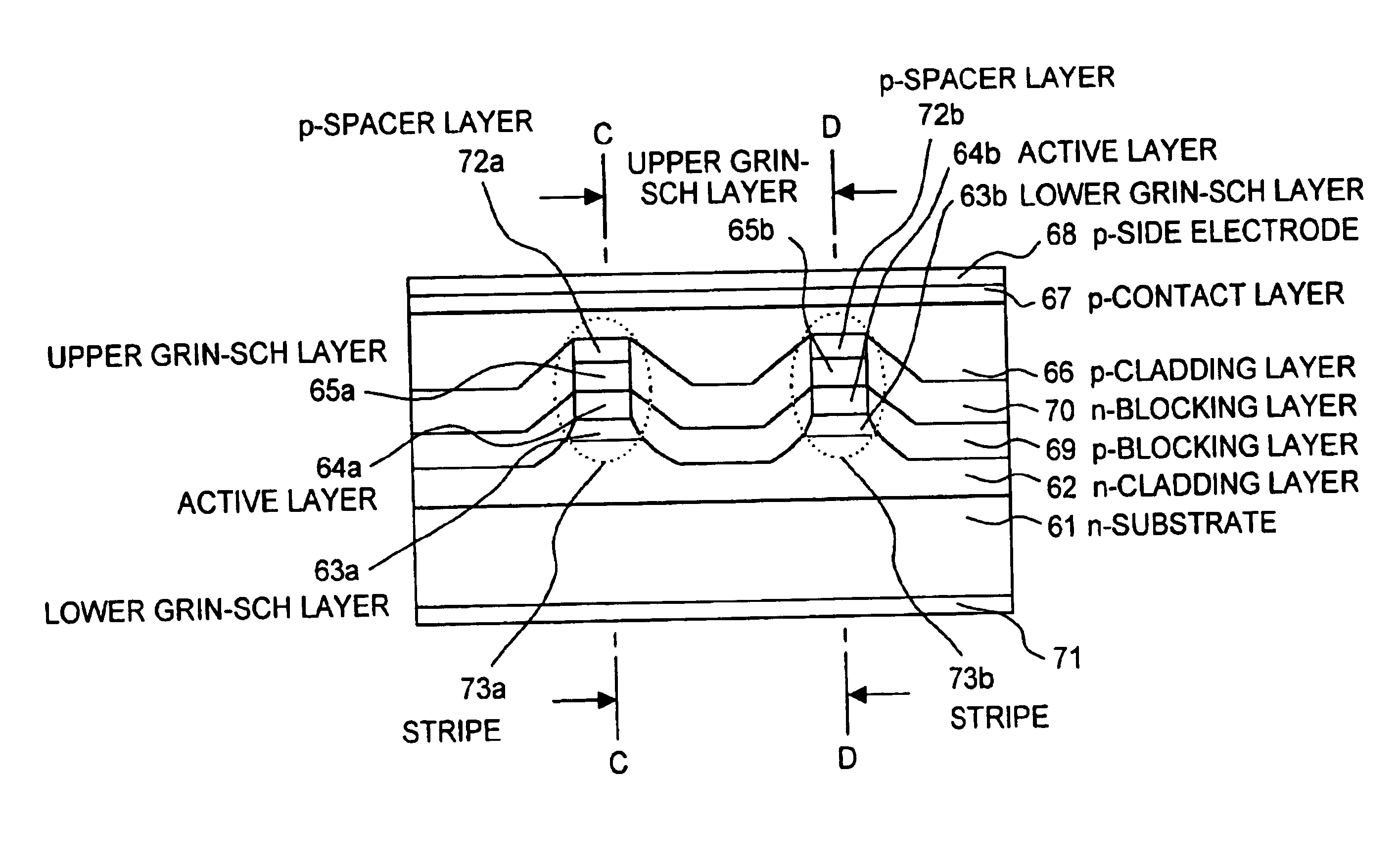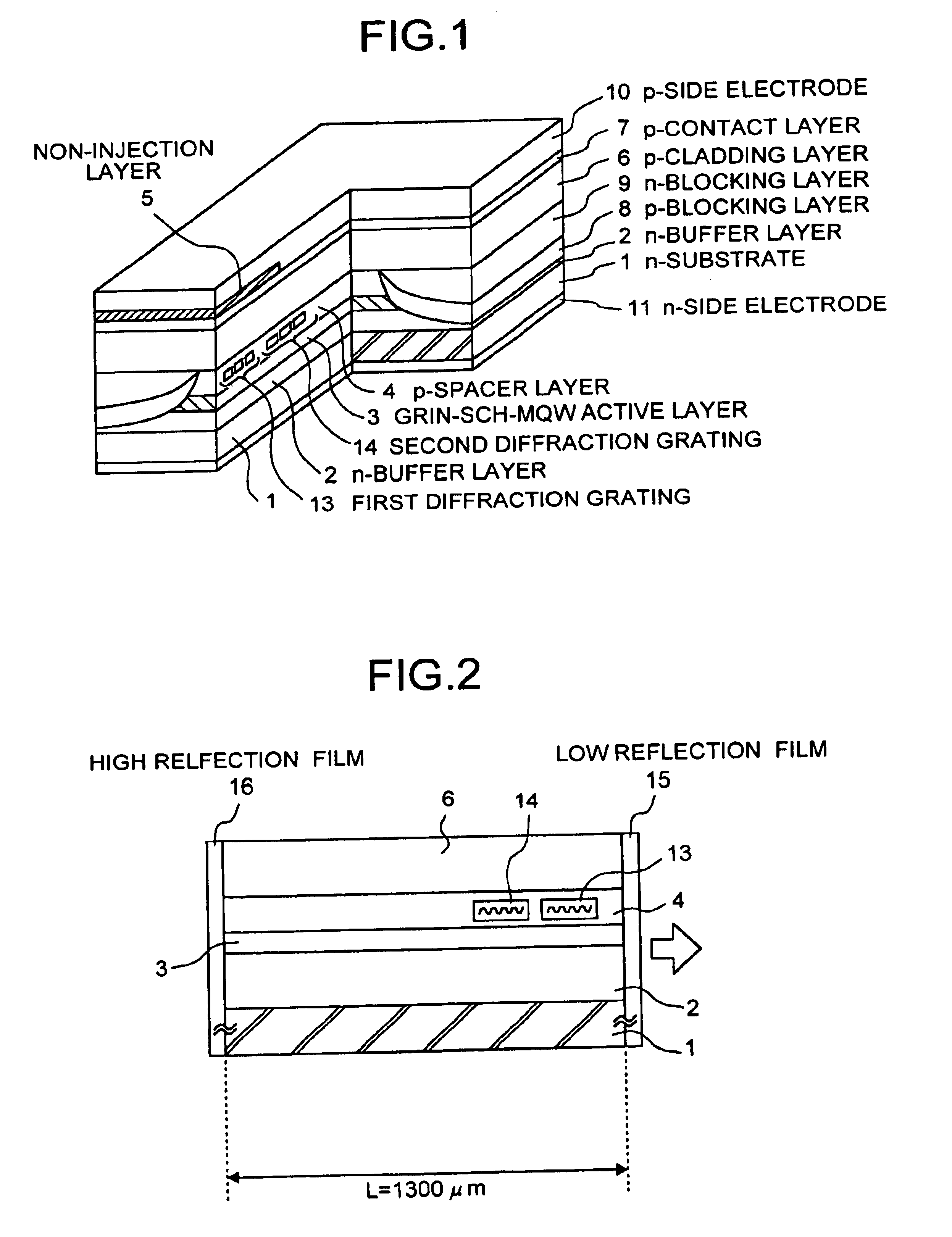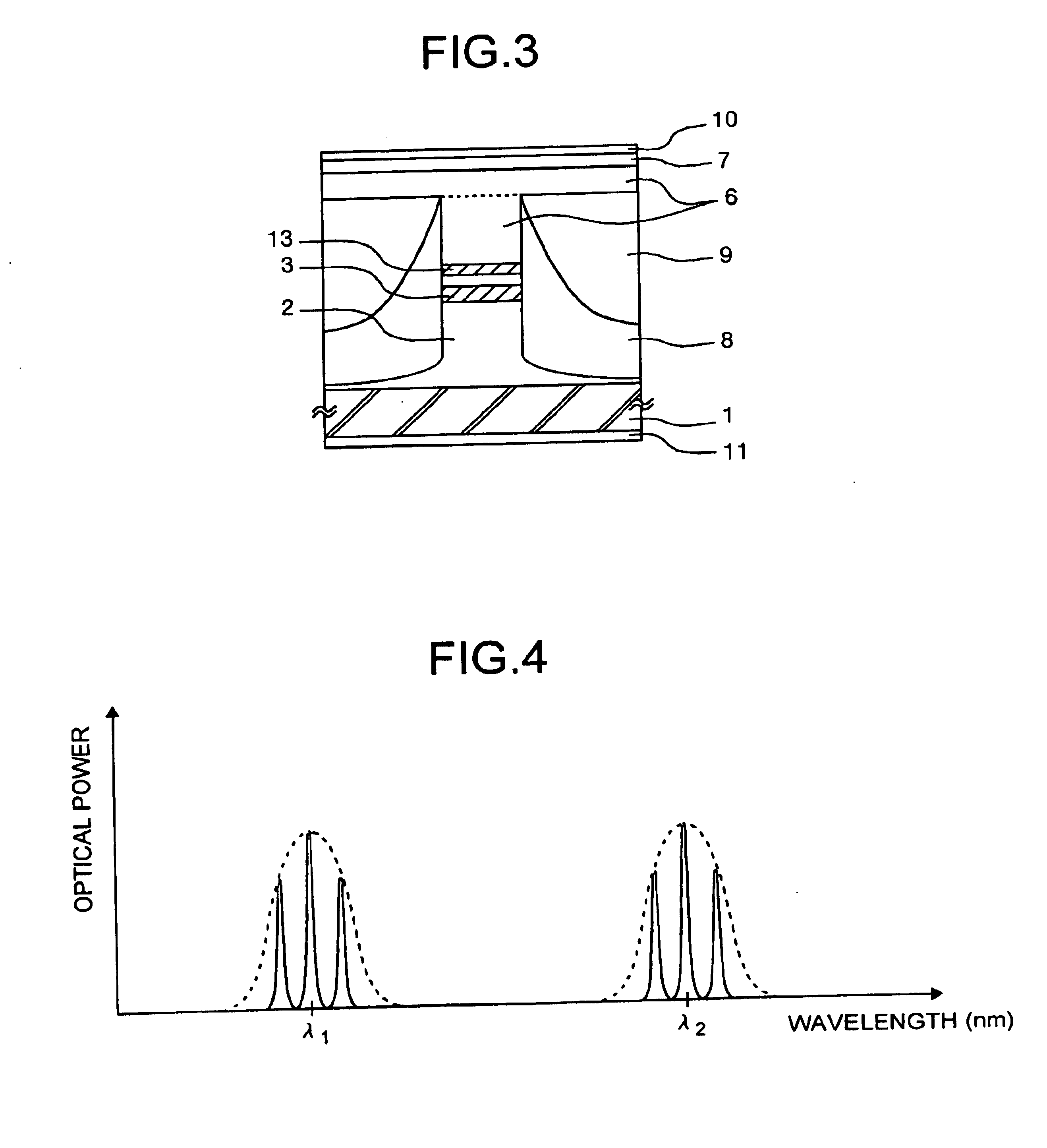Semiconductor laser device, semiconductor laser module, and optical fiber amplifier using the device or module
a semiconductor laser and laser module technology, applied in the direction of semiconductor lasers, optical resonator shape and construction, semiconductor laser arrangements, etc., can solve the problems of difficult to obtain constant amplification gain in edfa, and complicated process of fabrication of optical fiber amplifiers, so as to achieve stable amplification of signal lights and constant absorption coefficient
- Summary
- Abstract
- Description
- Claims
- Application Information
AI Technical Summary
Benefits of technology
Problems solved by technology
Method used
Image
Examples
eighth embodiment
the present invention will be explained. FIG. 35 is a longitudinal sectional view in a longitudinal direction of a semiconductor laser device according to the eighth embodiment of the present invention. FIG. 36 is a sectional view of the semiconductor laser device shown in FIG. 35 taken along the line A—A. A sectional view along the line B—B shall be the same as the sectional view taken along the line A—A and so it is not shown.
The semiconductor laser device according to the eighth embodiment is constituted so that, as shown in FIG. 35, an n-InP cladding layer 1002 is laminated on an n-InP substrate 1001. Moreover, on the line A—A shown in FIG. 35, a lower GRIN-SCH layer 1003a, an active layer 1004a, and an upper GRIN-SCH layer 1005a are laminated in a mesa shape. These layers form a stripe 1015. Similarly, on the line B—B, a lower GRIN-SCH layer 1003b, an active layer 1004b and an upper GRIN-SCH layer 1005b are laminated in a mesa shape. These layers form another stripe 1016. The s...
twelfth embodiment
the present invention will be explained next. A semiconductor laser module according to the twelfth embodiment uses the semiconductor laser device of the eighth embodiment.
FIG. 55 is sectional view that shows a structure of the semiconductor laser module of the twelfth embodiment. FIG. 56 is a frame format of the structure of a semiconductor laser module according to the twelfth embodiment of the present invention.
As shown in FIG. 55, the semiconductor laser module of the twelfth embodiment has a package 1051 inside of which is tightly sealed, a semiconductor laser device 1052 which is provided in the package 1051 and emits a laser beam, a photodiode 1053, a first lens 1054, a prism 1055, a half-wave plate (polarization rotating device) 1056, a polarization beam combiner (PBC) 1057 and an optical fiber 1058.
As shown in FIG. 56, the semiconductor laser device 1052 has stripes 1015 and 1016 that are formed in parallel on the same plane in the longitudinal direction and are separated. ...
thirteenth embodiment
the present invention will be explained. In the thirteenth embodiment, noise is reduced by applying reverse modulation frequency signal to each stripe of a semiconductor laser device according to ninth or eleventh embodiment in which the stripes are electrically separated. Further, laser beam emitted from each stripe is polarized multiplexed in the semiconductor laser module according to twelfth embodiment. By depolarizing the polarization multiplexed laser beam, the intensity modulation of each plane of polarization is averaged out. In addition, the stimulated Brillouin scattering is also reduced.
The depolarizer used in the thirteenth embodiment of the present invention will be explained. FIG. 59 shows a structure of the semiconductor laser device including the depolarizer used in the thirteenth embodiment of the present invention. In this semiconductor laser, a semiconductor laser element 1081 and a polarization-maintaining optical fiber 1082 are fused and connected by fuse 1083. ...
PUM
 Login to View More
Login to View More Abstract
Description
Claims
Application Information
 Login to View More
Login to View More - R&D
- Intellectual Property
- Life Sciences
- Materials
- Tech Scout
- Unparalleled Data Quality
- Higher Quality Content
- 60% Fewer Hallucinations
Browse by: Latest US Patents, China's latest patents, Technical Efficacy Thesaurus, Application Domain, Technology Topic, Popular Technical Reports.
© 2025 PatSnap. All rights reserved.Legal|Privacy policy|Modern Slavery Act Transparency Statement|Sitemap|About US| Contact US: help@patsnap.com



